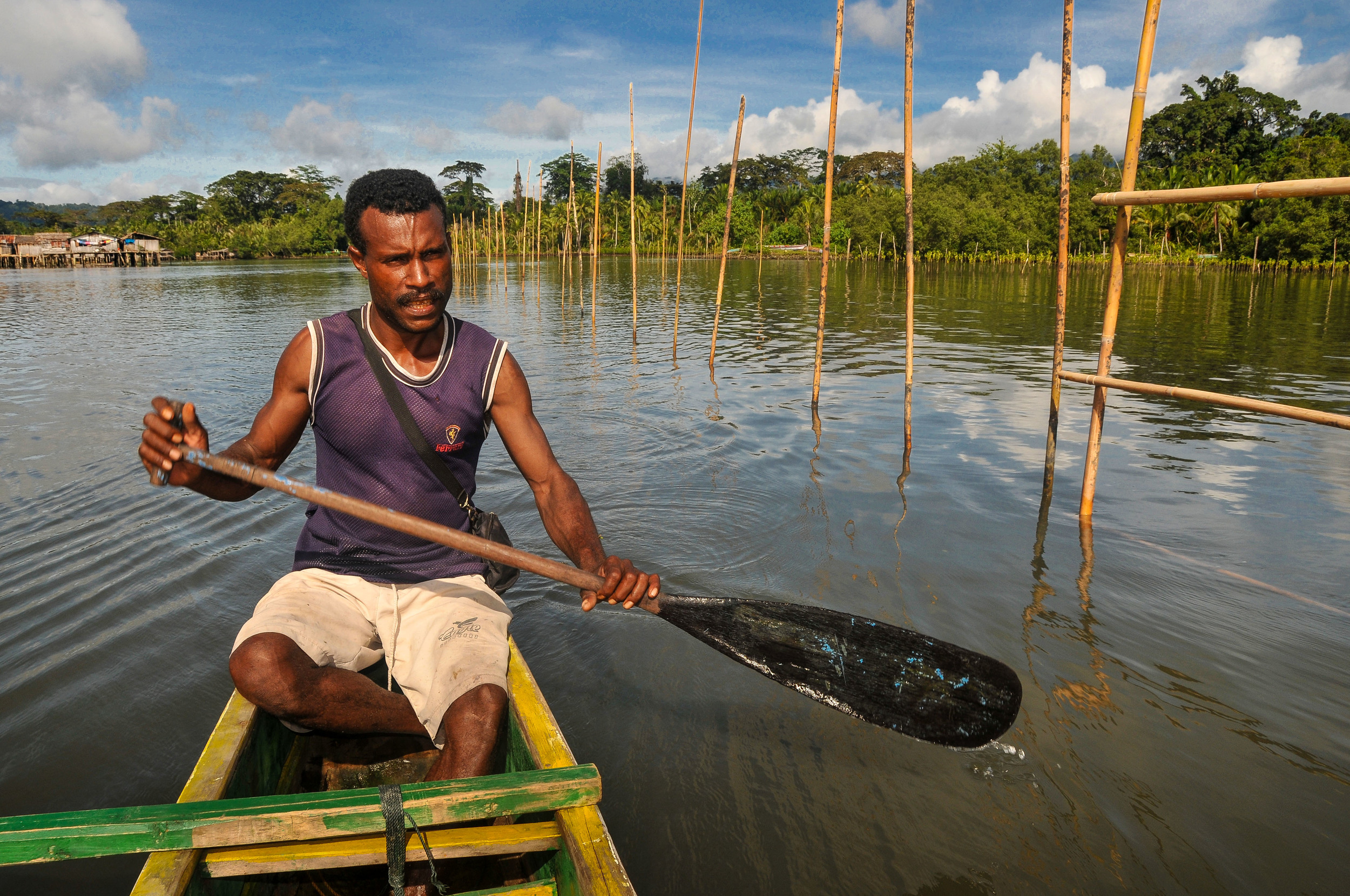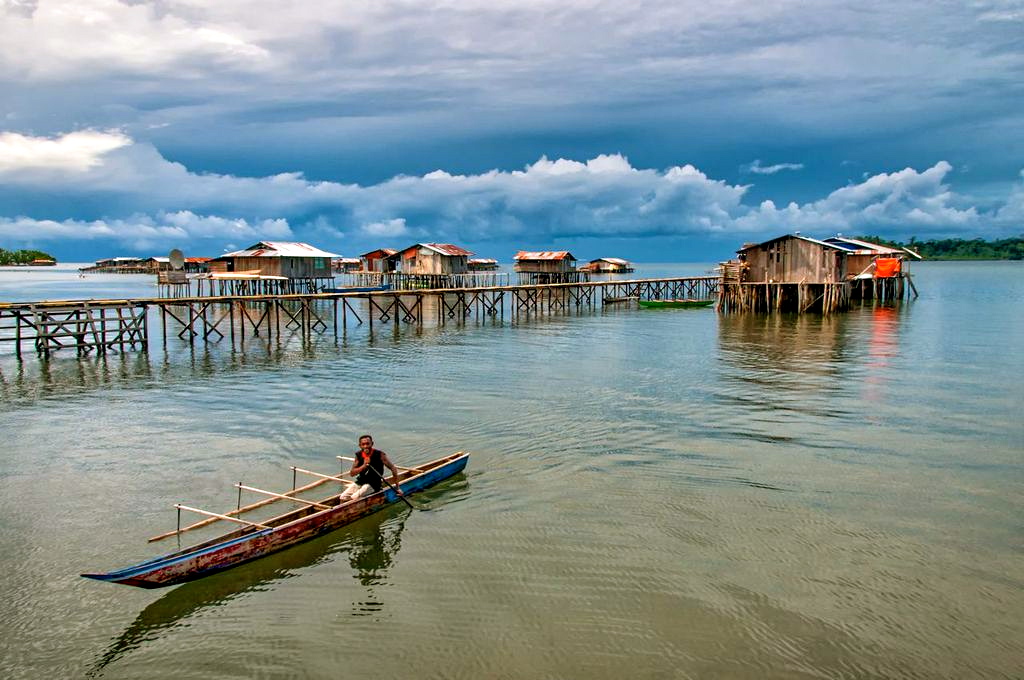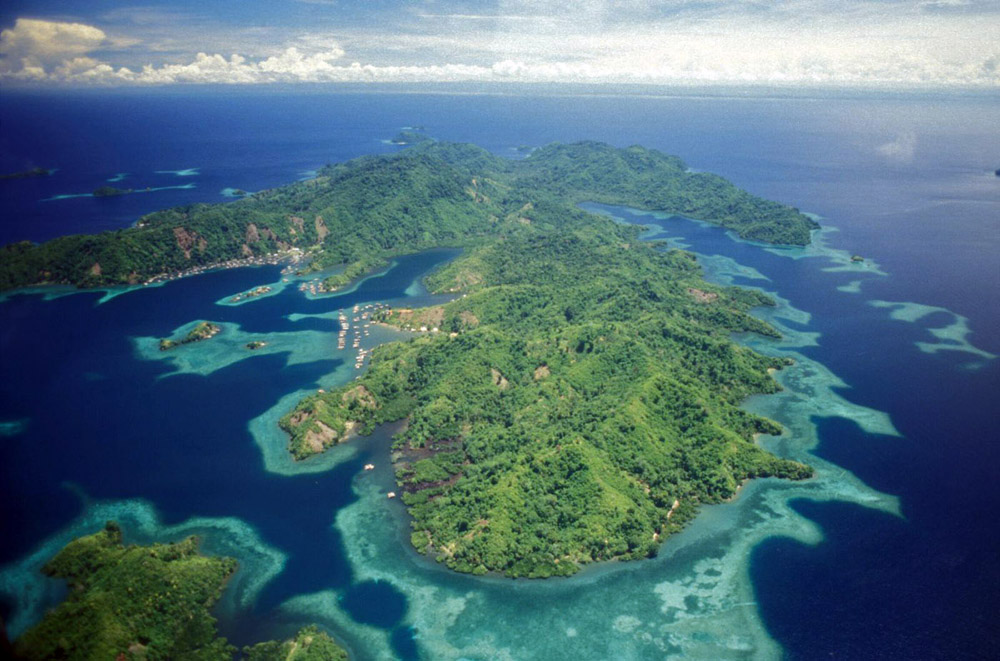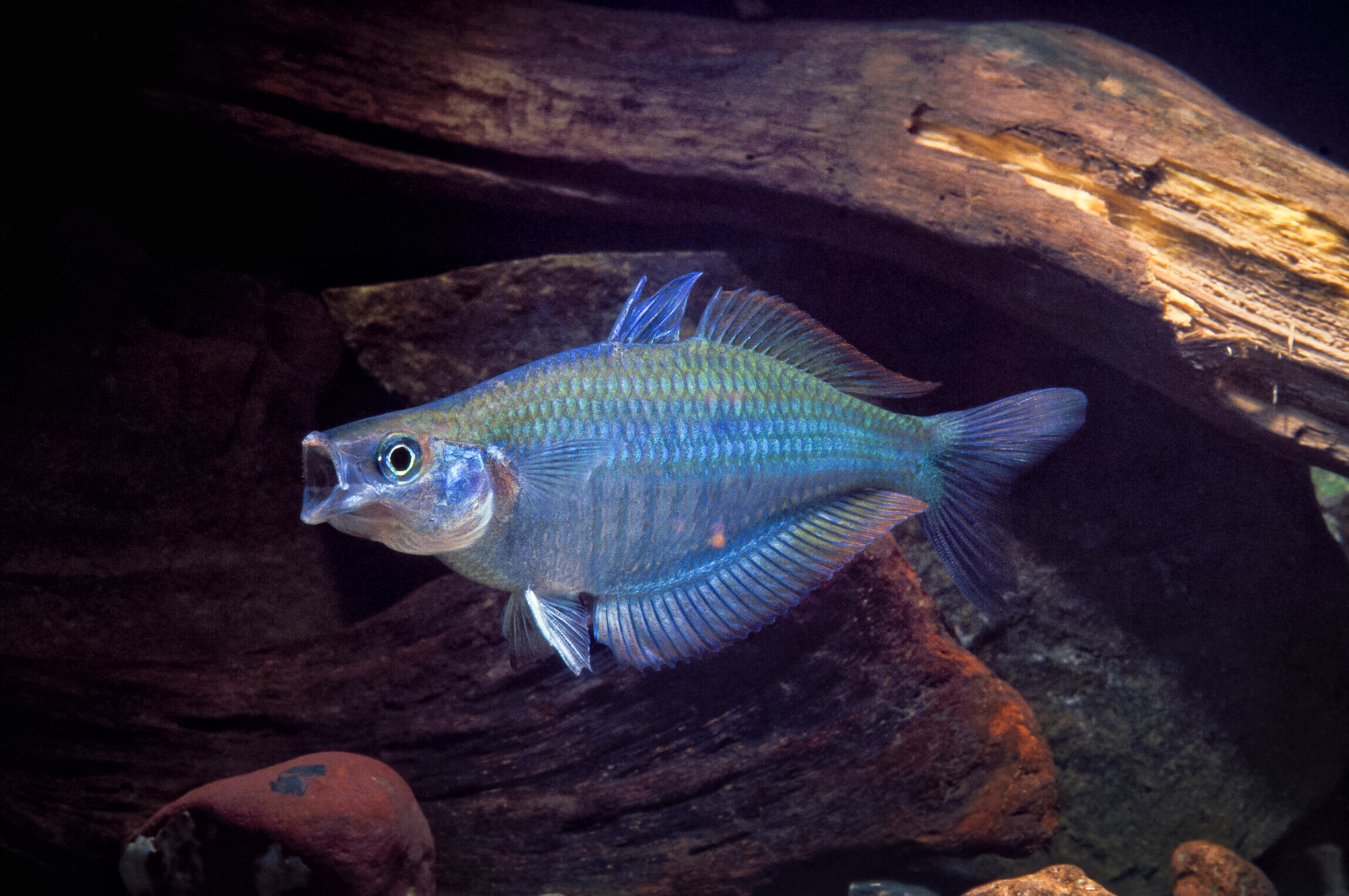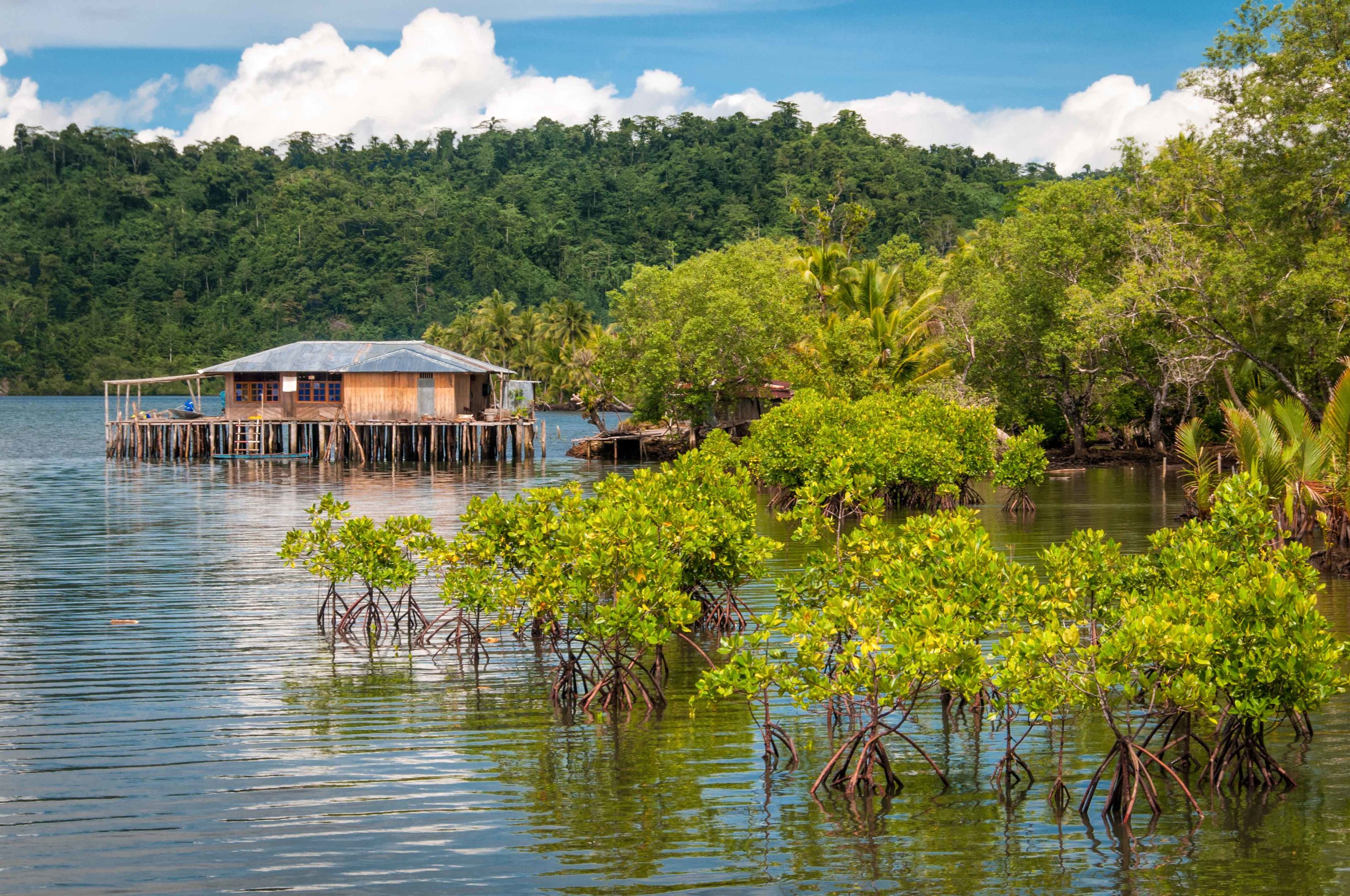Read part one of the Ambai Mangrove story here.
The large land-bridge island that Ambai’s called home was thought to be fairly well-known regarding biodiversity, but was relatively “unimportant” since it was thought to hold no endemics—plants or animals that occur only there. My first published paper, in 1991, was on the reproductive biology of a poorly-known species of microhylid frog. With my friends’ intimate knowledge of the forest, several other papers followed including new species descriptions of several fishes and frogs. In fact, we “discovered” two freshwater fishes and one marine fish as a direct result of this language learning. Of course, my Ambai friends knew all about them long before science got to them. These and a number of frog species all turned out to be endemics—restricted in range to the Ambai homeland. These discoveries just the beginning.
The science/indigenous knowledge marriage led, for many Ambais, to a deeper knowledge and appreciation for their environment. Some issues, such as the destructive land clearance along riverbanks for gardens, leading to chronic erosion, degrading water quality and exacerbating periodic flooding, are informed by this synergy of traditional knowledge and science, yet workable solutions remain elusive. In other areas, actions have been taken, such as the successful and ongoing mangrove restoration project—initiated entirely by a group of local people armed with materials from our ongoing language and culture learning.
In fact, due to the success of the modest mangrove restoration project, our Ambai friends are now more open to other development or restoration initiatives that have scientifically-proven benefits, in this case environmental and livelihood benefits. The benefits of protecting existing mangrove ecosystems or restoring damaged or destroyed systems are well-studied and many.
But perhaps the clincher, at least for the Ambais, is that the mangroves provide protection and spawning habitat for a great number of fish species, including many that are important to Ambai fishermen. In fact, studies have shown that, depending on where you are in the tropical world, each hectare of intact, healthy mangrove ecosystem translates into between 20 and 100 tonnes of fisheries annually. That means, one hectare of mangroves destroyed ultimately means 20 to 100 tonnes of fish no longer available for fishers. Or, it means that each hectare of restored mangrove forest, …well, you get the picture.
As I encouraged the Ambai mangrove restorationists, I believed it would take many years to actually see convincing benefits of their work. Meanwhile, the village leaders were asking me for information on no-take zones for the coral reef, or about the possibility of setting up their own marine protected area (MPA). During this meeting one man commented that we’d better have everyone on board for such (obviously a very wise person), and not just the group of people as was true for the mangrove restoration! “Oh no,” I thought, “people are against the mangrove restoration!”—and I had heard that some had initially been speaking against. Reluctantly, I responded, “So people don’t like the mangrove project, huh?” The answer was a resounding group “No, we all love it now!” But it hadn’t gotten most of the people on board at first.
As I listened they told how many people were at first angry and opposed to the mangrove restoration. Some even damaged planted mangrove trees, swinging their machetes to chop them as they walked or paddled past. That wasn’t happening now so much because now almost everyone saw the benefits of the mangrove restoration. “What benefits?” I blurted out.
"Oh," they said, "it used to be that people could sit on the porches of their houses and watch schools of fishes and fingerlings going in and out of the mangroves. It was rich with fishes and we could catch plenty. But that hasn’t really been the case in our times—this is what our fathers told us it was like. The mangroves had been mostly decimated so we never saw this. But now, thanks to the restoration plots, for the first time in our lives we see that our fathers spoke true—now we sit and watch schools of fingerlings swimming on the tides in and out of the mangroves. The mangroves have brought the fish back to spawn and grow big. And that’s why they were so keen to take this next step and initiate some sort of MPA."[1]
My comparatively shallow knowledge of science combined with their deep knowledge of their land and nature, and the result was successful, informed and appreciated development, and for the most part, owned by themselves. These experiences have convinced me of the value, and even necessity, of integrating good rigorous science with deep indigenous knowledge to produce a synergy otherwise not possible. -
Author: David S. Price,
Senior Environmental Consultant
This International Mother Language Day spotlights on science and local language. We hope to take a closer look on the issues that surround that theme, including the contribution that ethnolinguistic minorities can make to major issues related to global citizenship because of their unique indigenous knowledge. Also how communities can be empowered to see the value in their unique identities and traditions involving the environment in which they live.
"By harnessing science, technology and innovation, and promoting compassion, care and concern for our human family, education can prepare young people to help solve the interconnected challenges of the 21st century.”[2]
- UN Secretary General, Ban Ki-moon
Images remain the property of David S. Price and are copyrighted. Used with permission.
[1] Unfortunately, several months after this meeting, in June 2010 just before we left for another assignment, the Ambai villages in this area experienced a mega-earthquake and almost all houses and existing infrastructure were destroyed. It has taken till the present for people to recover from that and to begin thinking about an MPA again.
[2] Press release: UNESCO Global Citizenship Forum opens in Bangkok - See more at: http://www.globaleducationfirst.org/3295.htm#sthash.kpewtikr.dpuf

